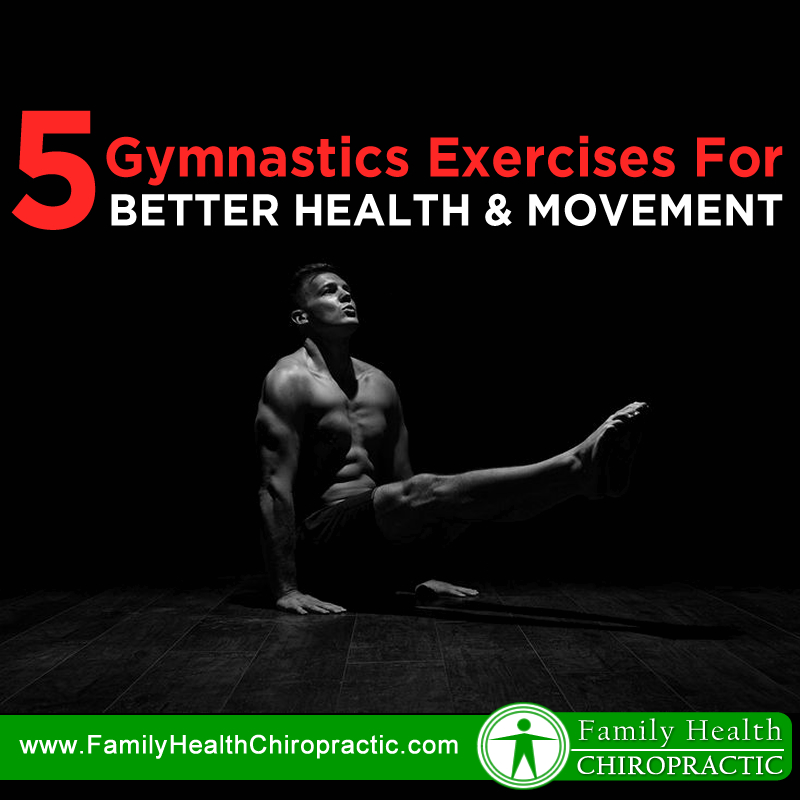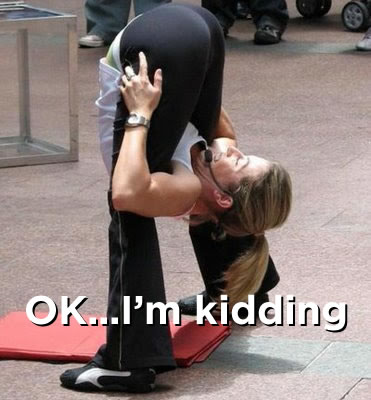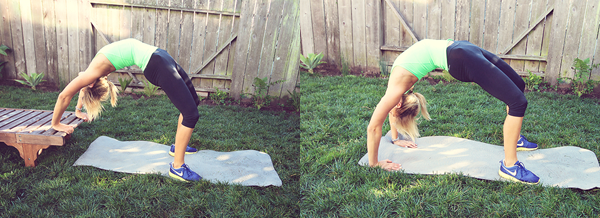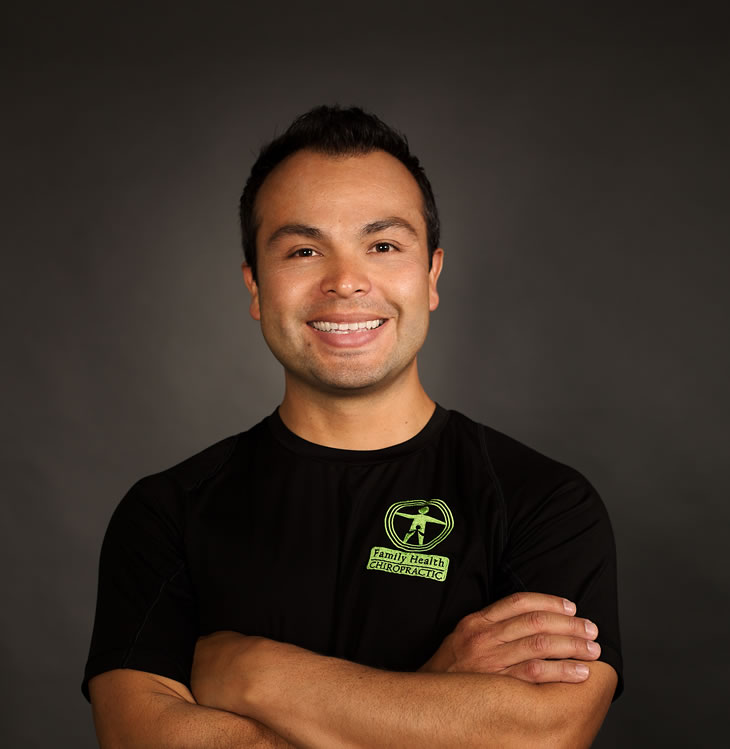I’ve been a fan of Tim Ferris, American author, entrepreneur, angel investor, and public speaker for many years now. He’s known most for his best selling book, The 4 Hour Work Week and as a big human self-experimenter or life hacker. This weekend I listened to his podcast where he interviewed Christopher Sommer, former US national team gymnastics coach. Coach Sommer is also the founder of GymnasticBodies, a training system that I am in the process of testing myself. As a world-renowned Olympic coach, Sommer is known for building his students into some of the strongest, most powerful athletes in the world.
Everything this guy said just made so much damn sense to me that I had to share, especially with regard to proper progression and injury avoidance. So many people want to be healthy and as soon as they start exercising they hurt themselves. Why? Because we don't start from the basics. If you want to listen to the interview yourself, you can check it out here: The Secrets of Gymnastics Strength Training
During the interview, the question was asked, If someone is 35-years-old, a former athlete and has never done gymnastics, what’s a good way to start?
Coach Sommers was pretty blunt about this and I have to say that after working with thousands of people here in Austin TX (one of the fittest, healthiest cities in the US), I have to agree. Most adults are broken.
We start off as children, spending much of our day playing, laying on the floor stretching out in awkward positions and pushing our bodies beyond our limits; because quite frankly we don't know our limits as kiddos. Then it starts to slow down in high school, more in college to the point that we have almost no ability in our work life- maybe 45 minutes of gym time a few times a week. And then we want to get back into shape and hit it hard like there's not tomorrow. Then pain.
“The first thing that has to happen to most adults, is that we have to fix joints. We have to repair their bodies. Most adults are simply broken and yet they wonder why they hurt gardening or when the'yre working out.”
Gymnastics strength training provides countless benefits to those willing to commit to the process. And by process- you’ve got to earn your ability to do things; nothing comes over night. But by focusing on bodyweight progressions, through this form of training you have the opportunity to increase relative strength, strength endurance, mobility, body awareness, movement awareness, and so much more.
Additionally, the intense full-body muscle contractions and significant time spent under tension lead to great gains in hypertrophy (big muscles), lean muscle mass (the “ripped” effect), and fat loss (sexy factor).
I find it interesting that we can look at gymnasts and think, “WOW… how amazing are they”… yet we all have the ability to achieve the same results. The problem is that we all don’t have the patience and are unwilling to put in the time.
How to Achieve A Gymnastics Body
First off, this article won't get you there. But it's a start! The greatest benefit from gymnastics training is not directly related to ability or physique, but to your mindset and approach. If I told you to write a 365 page book for me; you’d immediately think it was not possible or start to stress about all the work it would take. But If I asked you to write 1 page per day for 1 whole year- it would seem a bit easier or at least more obtainable. And that’s the difference between gymnastics strength training and most other forms of exercise. In the fitness industry, just as in life, it is all too common to encounter people who want instant gratification and immediate results.
Stretching, high reps with low weight or body weight, and joint prehab. This the the prescription that we all need- including some of the best athletes in the world. But Nooooooo! People just want to cycle for miles on end, run miles on end, hold a handstand, climb a rope with no legs, squat 500 pounds or learn to do a back flip. The big problem, with this mindset, is that these people often end up injured, plateaued, or both. And I’ve personally seen this happen over and over and over again.
People who succeed in health and personal fitness are those who take the long road; gradual, consistent steps on a path riddled with prioritizing quality and mastery. Coach Sommer compares this shift in mindset to the difference in maturity between a child and an adult.
A child wants things right away, and if a task takes hard work, discipline, or commitment, the child is likely to give up and shift attention to something new. As a person matures into an adult, they are more likely to realize the potential benefits of focusing on one task for longer periods of time, even if it does require significant amounts of energy.
5 Basic Gymnastics Strength Training Exercises For Improved Movement
Here are four basic gymnastics strength-training exercises that can give you the most bang for your buck. For many of us, modern lifestyle and one-sided training have stolen our ability to complete these relatively simple body weight tasks, so do not be surprised if these end up being a bit more challenging than you first presume.
1. The Jefferson Curl
This exercise is one of the best mobility and prehab exercises we know. Some benefits include:
- Lengthening of the hamstrings and the spinal muscles (from your neck to your low back)
- Strengthening of the connective tissue between the vertebrae
- Increased control of spinal mobility
- Improved back health under load

2. The Hollow Body Hold
The hollow body hold is a foundational position in all of gymnastics, and allows you to properly transfer force from your upper body to your lower body without any energy leaks. In fact, most of the injuries that I see take place in my office are due to “energy leaks” or the inability to transfer weight properly even when it consists of only bending down to lift a newspaper.
The stronger and more stable you are in this position, the more power you’ll have when:
- squatting
- throwing
- pushing
- pulling
- jumping
- hitting
- kicking
- sprinting
Begin by lying down on your back, with your legs outstretched and together. Completely straighten your legs by flexing your knees, and ensure proper form by pointing your toes as far away from your body as possible. Also reach your arms overhead, completely straightening your elbows and looking up towards the ceiling.
From this outstretched position, engage your entire anterior core by lifting your arms and legs off the floor. You should focus on pressing your lower back into the ground while squeezing your entire abdominal wall. Be sure that your shoulders are slightly lifted and your ribs are tucked in rather than protruding from your chest. Ideally your body shape should be smooth and round, almost like a banana.
Hold this hollow body position for a full sixty seconds. To ensure there is no cheating, use a timer, metronome, or stopwatch to count your minute. If you cannot hold the position with integrity for the full time, then you might need to start with a scaled version such as tucking your legs in towards your chest or bringing your arms down by your side.
3. Arch Body Hold
This is the complete opposite position as the hollow body. Where the hollow body works the entire anterior core, the arch body position will expose any weakness along your posterior chain or the back part of your body. Additionally, many people are chronically tight in the front of their bodies, and the arch body hold will open up tight areas such as your chest and hip flexors.
Many of us are chronically tight in the front of the body, so this exercise will help improve all the following muscles due to chronic sitting:
- Pec minor and Major
- Hip-flexors
- Quadriceps
- Abs
To start, lie facedown on your belly with your arms outstretched overhead and your legs straight and together. As you can imagine, the goal here is to completely arch your entire body as much as possible, so lift both your upper and lower body as high as you can towards the ceiling. Focus on engaging your glutes and mid-back so you are not exclusively arching from your lower back.
If you are like most people who try to hold an arch body position for sixty seconds, you will begin to tremble, shake, curse, and drop to the floor before the minute has expired. This should serve as a wake-up call for you to strengthen your posterior chain and stretch your chest and hip flexors.
If necessary, break down the arch body position in a similar fashion to the hollow body hold by bringing your arms down to your side, bending your knees, or both.
4. Standing Pike Stretch
Finally, you get to relax and stretch. The standing pike stretch will assess flexion through the hips and spine, and those of you with tight hamstrings might struggle a bit here. Stand up tall with your legs completely straight and knees locked out, and completely fold over forward, placing your hands on the ground as fully as possible. Your goal is to reach your hands behind your feet to the point where you can press your bodyweight up onto your toes.
Ok… Seriously though… this one may be hard, but work at getting better!
If this position is unattainable for you right now, then try doing it seated. Sit up tall with your legs outstretched in front of you, knees totally straight, and have your partner gently push forward on the middle of your back. Inhale and exhale with your partner’s pushes, and reach your hands towards your feet, all while pressing the backs of your knees into the floor. No bouncing, just nice smooth gentle stretching.
5. Elevated Bridge
Forget deadlifts and roman chair extensions. If you want one exercise to give you a strong, flexible, injury-proof back, master the elevated bridges instead.
Bridges can help:
- Help get rid of back pain caused by sitting hunched over all day long
- Bulletproof the spine in preparation for heavy or explosive movements
- Strengthen your spinal muscles, which can prevent slipped discs
- Give the entire front of your body an incredible stretch
- Result in extra endurance in sports and life
- Work every single muscle in your back—as well as nearly every other muscle in your body
First, start wherever your current level is, then work up to the more difficult variations as your strength and flexibility increases. Aim to train bridges 2-3 times a week—but even once a week will make you stronger and more flexible. Bridge progressions go from short bridges, to straight bridges to the Elevated Bridge.
Short bridges
Short bridges are great for beginners or people with previous back injuries. They gently work your back, butt, and hamstring muscles and are a great starting place.
How to do them:
Lie on your back with your knees bent. Squeeze your butt and abs and raise your butt and hips as high as you can while still keeping your shoulders on the ground. Hold for one second, then lower down.
Straight Bridges
Straight bridges are the next progression in the bridge exercise, and will start working your shoulders as well as your back, butt and leg muscles.
How to do them:
Lie on your back with your legs straight. Place your hands on the floor on the outside of your hips, pointing your fingers toward your toes. Push yourself up onto your hands, lifting the hips up and squeezing your butt as you do so. Hold for a second, then lower back down.
Elevated bridges
Elevated bridges are the next step to help you ease into doing full bridges. These really start to work your shoulders as well as your back, butt and leg muscles.
How to do them:
Find a bench or elevated surface that’s about knee height or higher (make sure it’s sturdy) and sit in front of it. Face away from the bench, then place your hands by your head with your fingers pointing toward your feet. Press through your hands and raise your hips, arching your back and straightening your arms. Raise your hips as high as you can, then lower back down.
Conclusion
In any endeavor in life, you get out exactly what you put in. Impatient, shortsighted efforts will yield incomplete and poor-quality results, if not long-term injuries. On the other hand, a consistent work ethic, when paired with world-class programming and coaching knowledge, will allow trainees to continue to experience progress for months and years on end.










